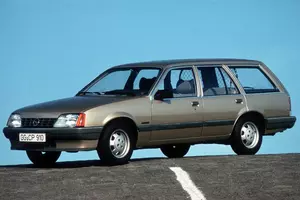
| Vehicle | Precise engine size | Difference from world average | Engine size to consumption ratio | Horsepower from 1 L | Engine size to 100 kg of weight |
|---|---|---|---|---|---|
| 2.3 D |
2.26 L (2260 cc) |
3.7% smaller | 66 cc to 1 mpg | 31 hp from 1 L | 174 cc to 100 kg |
| 2.0 S |
1.98 L (1979 cc) |
15.6% smaller | 110 cc to 1 mpg | 49 hp from 1 L | 165 cc to 100 kg |
| 1.8 S |
1.8 L (1796 cc) |
23.4% smaller | 64 cc to 1 mpg | 50 hp from 1 L | 163 cc to 100 kg |
| 2.0 E |
1.98 L (1979 cc) |
15.6% smaller | 76 cc to 1 mpg | 56 hp from 1 L | 165 cc to 100 kg |
| 2.2i |
2.2 L (2197 cc) |
6.4% smaller | 88 cc to 1 mpg | 52 hp from 1 L | 183 cc to 100 kg |
| 1.8 E |
1.8 L (1796 cc) |
23.4% smaller | 64 cc to 1 mpg | 56 hp from 1 L | 150 cc to 100 kg |
| 1.8 |
1.8 L (1796 cc) |
23.4% smaller | 75 cc to 1 mpg | 42 hp from 1 L | 163 cc to 100 kg |
| 2.2 TD |
2.26 L (2260 cc) |
3.7% smaller | 78 cc to 1 mpg | 38 hp from 1 L | 174 cc to 100 kg |
| Vehicle | 2.3 D |
|---|---|
| Precise engine size | 2.26 L (2260 cc) |
| Difference from world average | 3.7 smaller |
| Engine size to consumption ratio | 66 cc to 1 mpg |
| Horsepower from 1 L | 31 hp from 1 L |
| Engine size to 100 kg of weight | 174 cc to 100 kg |
| Vehicle | 2.0 S |
| Precise engine size | 1.98 L (1979 cc) |
| Difference from world average | 15.6 smaller |
| Engine size to consumption ratio | 110 cc to 1 mpg |
| Horsepower from 1 L | 49 hp from 1 L |
| Engine size to 100 kg of weight | 165 cc to 100 kg |
| Vehicle | 1.8 S |
| Precise engine size | 1.8 L (1796 cc) |
| Difference from world average | 23.4 smaller |
| Engine size to consumption ratio | 64 cc to 1 mpg |
| Horsepower from 1 L | 50 hp from 1 L |
| Engine size to 100 kg of weight | 163 cc to 100 kg |
| Vehicle | 2.0 E |
| Precise engine size | 1.98 L (1979 cc) |
| Difference from world average | 15.6 smaller |
| Engine size to consumption ratio | 76 cc to 1 mpg |
| Horsepower from 1 L | 56 hp from 1 L |
| Engine size to 100 kg of weight | 165 cc to 100 kg |
| Vehicle | 2.2i |
| Precise engine size | 2.2 L (2197 cc) |
| Difference from world average | 6.4 smaller |
| Engine size to consumption ratio | 88 cc to 1 mpg |
| Horsepower from 1 L | 52 hp from 1 L |
| Engine size to 100 kg of weight | 183 cc to 100 kg |
| Vehicle | 1.8 E |
| Precise engine size | 1.8 L (1796 cc) |
| Difference from world average | 23.4 smaller |
| Engine size to consumption ratio | 64 cc to 1 mpg |
| Horsepower from 1 L | 56 hp from 1 L |
| Engine size to 100 kg of weight | 150 cc to 100 kg |
| Vehicle | 1.8 |
| Precise engine size | 1.8 L (1796 cc) |
| Difference from world average | 23.4 smaller |
| Engine size to consumption ratio | 75 cc to 1 mpg |
| Horsepower from 1 L | 42 hp from 1 L |
| Engine size to 100 kg of weight | 163 cc to 100 kg |
| Vehicle | 2.2 TD |
| Precise engine size | 2.26 L (2260 cc) |
| Difference from world average | 3.7 smaller |
| Engine size to consumption ratio | 78 cc to 1 mpg |
| Horsepower from 1 L | 38 hp from 1 L |
| Engine size to 100 kg of weight | 174 cc to 100 kg |
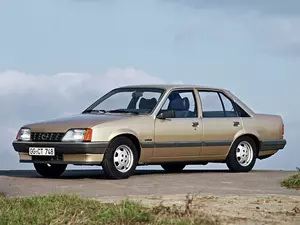
| Vehicle | Precise engine size | Difference from world average | Engine size to consumption ratio | Horsepower from 1 L | Engine size to 100 kg of weight |
|---|---|---|---|---|---|
| 2.2 E |
2.2 L (2197 cc) |
6.4% smaller | 78 cc to 1 mpg | 52 hp from 1 L | 200 cc to 100 kg |
| 2.3 D |
2.26 L (2260 cc) |
3.7% smaller | 65 cc to 1 mpg | 29 hp from 1 L | 174 cc to 100 kg |
| 2.0 S |
1.98 L (1979 cc) |
15.6% smaller | 73 cc to 1 mpg | 51 hp from 1 L | 180 cc to 100 kg |
| 2.0 E |
1.98 L (1979 cc) |
15.6% smaller | 73 cc to 1 mpg | 56 hp from 1 L | 180 cc to 100 kg |
| 1.8 S |
1.8 L (1796 cc) |
23.4% smaller | 62 cc to 1 mpg | 50 hp from 1 L | 163 cc to 100 kg |
| 2.2 D |
2.26 L (2260 cc) |
3.7% smaller | 65 cc to 1 mpg | 31 hp from 1 L | 188 cc to 100 kg |
| 1.8i CAT |
1.8 L (1796 cc) |
23.4% smaller | 69 cc to 1 mpg | 56 hp from 1 L | 163 cc to 100 kg |
| 1.8 |
1.8 L (1796 cc) |
23.4% smaller | 69 cc to 1 mpg | 42 hp from 1 L | 163 cc to 100 kg |
| 2.3 TD |
2.26 L (2260 cc) |
3.7% smaller | 66 cc to 1 mpg | 38 hp from 1 L | 188 cc to 100 kg |
| Vehicle | 2.2 E |
|---|---|
| Precise engine size | 2.2 L (2197 cc) |
| Difference from world average | 6.4 smaller |
| Engine size to consumption ratio | 78 cc to 1 mpg |
| Horsepower from 1 L | 52 hp from 1 L |
| Engine size to 100 kg of weight | 200 cc to 100 kg |
| Vehicle | 2.3 D |
| Precise engine size | 2.26 L (2260 cc) |
| Difference from world average | 3.7 smaller |
| Engine size to consumption ratio | 65 cc to 1 mpg |
| Horsepower from 1 L | 29 hp from 1 L |
| Engine size to 100 kg of weight | 174 cc to 100 kg |
| Vehicle | 2.0 S |
| Precise engine size | 1.98 L (1979 cc) |
| Difference from world average | 15.6 smaller |
| Engine size to consumption ratio | 73 cc to 1 mpg |
| Horsepower from 1 L | 51 hp from 1 L |
| Engine size to 100 kg of weight | 180 cc to 100 kg |
| Vehicle | 2.0 E |
| Precise engine size | 1.98 L (1979 cc) |
| Difference from world average | 15.6 smaller |
| Engine size to consumption ratio | 73 cc to 1 mpg |
| Horsepower from 1 L | 56 hp from 1 L |
| Engine size to 100 kg of weight | 180 cc to 100 kg |
| Vehicle | 1.8 S |
| Precise engine size | 1.8 L (1796 cc) |
| Difference from world average | 23.4 smaller |
| Engine size to consumption ratio | 62 cc to 1 mpg |
| Horsepower from 1 L | 50 hp from 1 L |
| Engine size to 100 kg of weight | 163 cc to 100 kg |
| Vehicle | 2.2 D |
| Precise engine size | 2.26 L (2260 cc) |
| Difference from world average | 3.7 smaller |
| Engine size to consumption ratio | 65 cc to 1 mpg |
| Horsepower from 1 L | 31 hp from 1 L |
| Engine size to 100 kg of weight | 188 cc to 100 kg |
| Vehicle | 1.8i CAT |
| Precise engine size | 1.8 L (1796 cc) |
| Difference from world average | 23.4 smaller |
| Engine size to consumption ratio | 69 cc to 1 mpg |
| Horsepower from 1 L | 56 hp from 1 L |
| Engine size to 100 kg of weight | 163 cc to 100 kg |
| Vehicle | 1.8 |
| Precise engine size | 1.8 L (1796 cc) |
| Difference from world average | 23.4 smaller |
| Engine size to consumption ratio | 69 cc to 1 mpg |
| Horsepower from 1 L | 42 hp from 1 L |
| Engine size to 100 kg of weight | 163 cc to 100 kg |
| Vehicle | 2.3 TD |
| Precise engine size | 2.26 L (2260 cc) |
| Difference from world average | 3.7 smaller |
| Engine size to consumption ratio | 66 cc to 1 mpg |
| Horsepower from 1 L | 38 hp from 1 L |
| Engine size to 100 kg of weight | 188 cc to 100 kg |
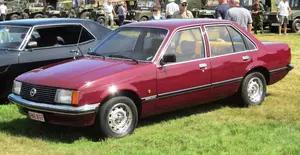
| Vehicle | Precise engine size | Difference from world average | Engine size to consumption ratio | Horsepower from 1 L | Engine size to 100 kg of weight |
|---|---|---|---|---|---|
| 2.0 E |
1.98 L (1979 cc) |
15.6% smaller | 79 cc to 1 mpg | 56 hp from 1 L | 180 cc to 100 kg |
| 2.0 S |
1.98 L (1979 cc) |
15.6% smaller | 76 cc to 1 mpg | 51 hp from 1 L | 180 cc to 100 kg |
| 2.1 D |
2.07 L (2068 cc) |
11.8% smaller | 69 cc to 1 mpg | 29 hp from 1 L | 172 cc to 100 kg |
| 1.9 |
1.9 L (1897 cc) |
19.1% smaller | 79 cc to 1 mpg | 39 hp from 1 L | 172 cc to 100 kg |
| 2.0 |
1.98 L (1979 cc) |
15.6% smaller | 86 cc to 1 mpg | 45 hp from 1 L | 180 cc to 100 kg |
| 1.7 |
1.7 L (1698 cc) |
27.6% smaller | 71 cc to 1 mpg | 35 hp from 1 L | 154 cc to 100 kg |
| 2.3 D |
2.26 L (2260 cc) |
3.7% smaller | 81 cc to 1 mpg | 29 hp from 1 L | 188 cc to 100 kg |
| Vehicle | 2.0 E |
|---|---|
| Precise engine size | 1.98 L (1979 cc) |
| Difference from world average | 15.6 smaller |
| Engine size to consumption ratio | 79 cc to 1 mpg |
| Horsepower from 1 L | 56 hp from 1 L |
| Engine size to 100 kg of weight | 180 cc to 100 kg |
| Vehicle | 2.0 S |
| Precise engine size | 1.98 L (1979 cc) |
| Difference from world average | 15.6 smaller |
| Engine size to consumption ratio | 76 cc to 1 mpg |
| Horsepower from 1 L | 51 hp from 1 L |
| Engine size to 100 kg of weight | 180 cc to 100 kg |
| Vehicle | 2.1 D |
| Precise engine size | 2.07 L (2068 cc) |
| Difference from world average | 11.8 smaller |
| Engine size to consumption ratio | 69 cc to 1 mpg |
| Horsepower from 1 L | 29 hp from 1 L |
| Engine size to 100 kg of weight | 172 cc to 100 kg |
| Vehicle | 1.9 |
| Precise engine size | 1.9 L (1897 cc) |
| Difference from world average | 19.1 smaller |
| Engine size to consumption ratio | 79 cc to 1 mpg |
| Horsepower from 1 L | 39 hp from 1 L |
| Engine size to 100 kg of weight | 172 cc to 100 kg |
| Vehicle | 2.0 |
| Precise engine size | 1.98 L (1979 cc) |
| Difference from world average | 15.6 smaller |
| Engine size to consumption ratio | 86 cc to 1 mpg |
| Horsepower from 1 L | 45 hp from 1 L |
| Engine size to 100 kg of weight | 180 cc to 100 kg |
| Vehicle | 1.7 |
| Precise engine size | 1.7 L (1698 cc) |
| Difference from world average | 27.6 smaller |
| Engine size to consumption ratio | 71 cc to 1 mpg |
| Horsepower from 1 L | 35 hp from 1 L |
| Engine size to 100 kg of weight | 154 cc to 100 kg |
| Vehicle | 2.3 D |
| Precise engine size | 2.26 L (2260 cc) |
| Difference from world average | 3.7 smaller |
| Engine size to consumption ratio | 81 cc to 1 mpg |
| Horsepower from 1 L | 29 hp from 1 L |
| Engine size to 100 kg of weight | 188 cc to 100 kg |

| Vehicle | Precise engine size | Difference from world average | Engine size to consumption ratio | Horsepower from 1 L | Engine size to 100 kg of weight |
|---|---|---|---|---|---|
| 2.0 S |
1.98 L (1979 cc) |
15.6% smaller | 79 cc to 1 mpg | 51 hp from 1 L | 180 cc to 100 kg |
| 2.1 D |
2.07 L (2068 cc) |
11.8% smaller | 71 cc to 1 mpg | 29 hp from 1 L | 159 cc to 100 kg |
| 1.9 |
1.9 L (1897 cc) |
19.1% smaller | 79 cc to 1 mpg | 39 hp from 1 L | 172 cc to 100 kg |
| 2.0 E |
1.98 L (1979 cc) |
15.6% smaller | 79 cc to 1 mpg | 56 hp from 1 L | 180 cc to 100 kg |
| 2.3 D |
2.26 L (2260 cc) |
3.7% smaller | 81 cc to 1 mpg | 29 hp from 1 L | 174 cc to 100 kg |
| 2.0 |
1.98 L (1979 cc) |
15.6% smaller | 86 cc to 1 mpg | 45 hp from 1 L | 180 cc to 100 kg |
| 1.7 |
1.7 L (1698 cc) |
27.6% smaller | 77 cc to 1 mpg | 35 hp from 1 L | 154 cc to 100 kg |
| Vehicle | 2.0 S |
|---|---|
| Precise engine size | 1.98 L (1979 cc) |
| Difference from world average | 15.6 smaller |
| Engine size to consumption ratio | 79 cc to 1 mpg |
| Horsepower from 1 L | 51 hp from 1 L |
| Engine size to 100 kg of weight | 180 cc to 100 kg |
| Vehicle | 2.1 D |
| Precise engine size | 2.07 L (2068 cc) |
| Difference from world average | 11.8 smaller |
| Engine size to consumption ratio | 71 cc to 1 mpg |
| Horsepower from 1 L | 29 hp from 1 L |
| Engine size to 100 kg of weight | 159 cc to 100 kg |
| Vehicle | 1.9 |
| Precise engine size | 1.9 L (1897 cc) |
| Difference from world average | 19.1 smaller |
| Engine size to consumption ratio | 79 cc to 1 mpg |
| Horsepower from 1 L | 39 hp from 1 L |
| Engine size to 100 kg of weight | 172 cc to 100 kg |
| Vehicle | 2.0 E |
| Precise engine size | 1.98 L (1979 cc) |
| Difference from world average | 15.6 smaller |
| Engine size to consumption ratio | 79 cc to 1 mpg |
| Horsepower from 1 L | 56 hp from 1 L |
| Engine size to 100 kg of weight | 180 cc to 100 kg |
| Vehicle | 2.3 D |
| Precise engine size | 2.26 L (2260 cc) |
| Difference from world average | 3.7 smaller |
| Engine size to consumption ratio | 81 cc to 1 mpg |
| Horsepower from 1 L | 29 hp from 1 L |
| Engine size to 100 kg of weight | 174 cc to 100 kg |
| Vehicle | 2.0 |
| Precise engine size | 1.98 L (1979 cc) |
| Difference from world average | 15.6 smaller |
| Engine size to consumption ratio | 86 cc to 1 mpg |
| Horsepower from 1 L | 45 hp from 1 L |
| Engine size to 100 kg of weight | 180 cc to 100 kg |
| Vehicle | 1.7 |
| Precise engine size | 1.7 L (1698 cc) |
| Difference from world average | 27.6 smaller |
| Engine size to consumption ratio | 77 cc to 1 mpg |
| Horsepower from 1 L | 35 hp from 1 L |
| Engine size to 100 kg of weight | 154 cc to 100 kg |
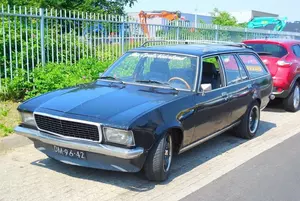
| Vehicle | Precise engine size | Difference from world average | Engine size to consumption ratio | Horsepower from 1 L | Engine size to 100 kg of weight |
|---|---|---|---|---|---|
| 1.7 |
1.7 L (1698 cc) |
27.6% smaller | 81 cc to 1 mpg | 39 hp from 1 L | 154 cc to 100 kg |
| 1.9 |
1.9 L (1897 cc) |
19.1% smaller | 95 cc to 1 mpg | 47 hp from 1 L | 172 cc to 100 kg |
| 1.7 S |
1.7 L (1698 cc) |
27.6% smaller | 77 cc to 1 mpg | 49 hp from 1 L | 154 cc to 100 kg |
| 1.9 S |
1.9 L (1897 cc) |
19.1% smaller | 95 cc to 1 mpg | 51 hp from 1 L | 172 cc to 100 kg |
| 2.0 D |
2 L (1998 cc) |
14.8% smaller | 69 cc to 1 mpg | 28 hp from 1 L | 154 cc to 100 kg |
| 2.1 D |
2.07 L (2068 cc) |
11.8% smaller | 71 cc to 1 mpg | 29 hp from 1 L | 159 cc to 100 kg |
| 2.0 S |
1.98 L (1979 cc) |
15.6% smaller | 99 cc to 1 mpg | 51 hp from 1 L | 180 cc to 100 kg |
| Vehicle | 1.7 |
|---|---|
| Precise engine size | 1.7 L (1698 cc) |
| Difference from world average | 27.6 smaller |
| Engine size to consumption ratio | 81 cc to 1 mpg |
| Horsepower from 1 L | 39 hp from 1 L |
| Engine size to 100 kg of weight | 154 cc to 100 kg |
| Vehicle | 1.9 |
| Precise engine size | 1.9 L (1897 cc) |
| Difference from world average | 19.1 smaller |
| Engine size to consumption ratio | 95 cc to 1 mpg |
| Horsepower from 1 L | 47 hp from 1 L |
| Engine size to 100 kg of weight | 172 cc to 100 kg |
| Vehicle | 1.7 S |
| Precise engine size | 1.7 L (1698 cc) |
| Difference from world average | 27.6 smaller |
| Engine size to consumption ratio | 77 cc to 1 mpg |
| Horsepower from 1 L | 49 hp from 1 L |
| Engine size to 100 kg of weight | 154 cc to 100 kg |
| Vehicle | 1.9 S |
| Precise engine size | 1.9 L (1897 cc) |
| Difference from world average | 19.1 smaller |
| Engine size to consumption ratio | 95 cc to 1 mpg |
| Horsepower from 1 L | 51 hp from 1 L |
| Engine size to 100 kg of weight | 172 cc to 100 kg |
| Vehicle | 2.0 D |
| Precise engine size | 2 L (1998 cc) |
| Difference from world average | 14.8 smaller |
| Engine size to consumption ratio | 69 cc to 1 mpg |
| Horsepower from 1 L | 28 hp from 1 L |
| Engine size to 100 kg of weight | 154 cc to 100 kg |
| Vehicle | 2.1 D |
| Precise engine size | 2.07 L (2068 cc) |
| Difference from world average | 11.8 smaller |
| Engine size to consumption ratio | 71 cc to 1 mpg |
| Horsepower from 1 L | 29 hp from 1 L |
| Engine size to 100 kg of weight | 159 cc to 100 kg |
| Vehicle | 2.0 S |
| Precise engine size | 1.98 L (1979 cc) |
| Difference from world average | 15.6 smaller |
| Engine size to consumption ratio | 99 cc to 1 mpg |
| Horsepower from 1 L | 51 hp from 1 L |
| Engine size to 100 kg of weight | 180 cc to 100 kg |

| Vehicle | Precise engine size | Difference from world average | Engine size to consumption ratio | Horsepower from 1 L | Engine size to 100 kg of weight |
|---|---|---|---|---|---|
| 1.7 |
1.7 L (1698 cc) |
27.6% smaller | 74 cc to 1 mpg | 39 hp from 1 L | 154 cc to 100 kg |
| 1.9 |
1.9 L (1897 cc) |
19.1% smaller | 95 cc to 1 mpg | 47 hp from 1 L | 172 cc to 100 kg |
| 1.7 S |
1.7 L (1698 cc) |
27.6% smaller | 77 cc to 1 mpg | 49 hp from 1 L | 154 cc to 100 kg |
| 2.0 |
1.98 L (1979 cc) |
15.6% smaller | 94 cc to 1 mpg | 51 hp from 1 L | 180 cc to 100 kg |
| 1.9 S |
1.9 L (1897 cc) |
19.1% smaller | 95 cc to 1 mpg | 51 hp from 1 L | 172 cc to 100 kg |
| 2.0 D |
2 L (1998 cc) |
14.8% smaller | 67 cc to 1 mpg | 28 hp from 1 L | 167 cc to 100 kg |
| 2.1 D |
2.07 L (2068 cc) |
11.8% smaller | 71 cc to 1 mpg | 29 hp from 1 L | 172 cc to 100 kg |
| Vehicle | 1.7 |
|---|---|
| Precise engine size | 1.7 L (1698 cc) |
| Difference from world average | 27.6 smaller |
| Engine size to consumption ratio | 74 cc to 1 mpg |
| Horsepower from 1 L | 39 hp from 1 L |
| Engine size to 100 kg of weight | 154 cc to 100 kg |
| Vehicle | 1.9 |
| Precise engine size | 1.9 L (1897 cc) |
| Difference from world average | 19.1 smaller |
| Engine size to consumption ratio | 95 cc to 1 mpg |
| Horsepower from 1 L | 47 hp from 1 L |
| Engine size to 100 kg of weight | 172 cc to 100 kg |
| Vehicle | 1.7 S |
| Precise engine size | 1.7 L (1698 cc) |
| Difference from world average | 27.6 smaller |
| Engine size to consumption ratio | 77 cc to 1 mpg |
| Horsepower from 1 L | 49 hp from 1 L |
| Engine size to 100 kg of weight | 154 cc to 100 kg |
| Vehicle | 2.0 |
| Precise engine size | 1.98 L (1979 cc) |
| Difference from world average | 15.6 smaller |
| Engine size to consumption ratio | 94 cc to 1 mpg |
| Horsepower from 1 L | 51 hp from 1 L |
| Engine size to 100 kg of weight | 180 cc to 100 kg |
| Vehicle | 1.9 S |
| Precise engine size | 1.9 L (1897 cc) |
| Difference from world average | 19.1 smaller |
| Engine size to consumption ratio | 95 cc to 1 mpg |
| Horsepower from 1 L | 51 hp from 1 L |
| Engine size to 100 kg of weight | 172 cc to 100 kg |
| Vehicle | 2.0 D |
| Precise engine size | 2 L (1998 cc) |
| Difference from world average | 14.8 smaller |
| Engine size to consumption ratio | 67 cc to 1 mpg |
| Horsepower from 1 L | 28 hp from 1 L |
| Engine size to 100 kg of weight | 167 cc to 100 kg |
| Vehicle | 2.1 D |
| Precise engine size | 2.07 L (2068 cc) |
| Difference from world average | 11.8 smaller |
| Engine size to consumption ratio | 71 cc to 1 mpg |
| Horsepower from 1 L | 29 hp from 1 L |
| Engine size to 100 kg of weight | 172 cc to 100 kg |
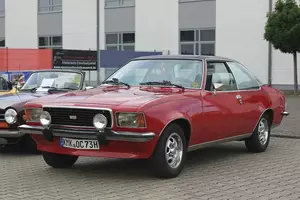
| Vehicle | Precise engine size | Difference from world average | Engine size to consumption ratio | Horsepower from 1 L | Engine size to 100 kg of weight |
|---|---|---|---|---|---|
| 1.7 S |
1.7 L (1698 cc) |
27.6% smaller | 89 cc to 1 mpg | 49 hp from 1 L | 154 cc to 100 kg |
| 1.9 |
1.9 L (1897 cc) |
19.1% smaller | 95 cc to 1 mpg | 47 hp from 1 L | 172 cc to 100 kg |
| 2.0 |
1.98 L (1979 cc) |
15.6% smaller | 73 cc to 1 mpg | 51 hp from 1 L | 165 cc to 100 kg |
| 1.9 S |
1.9 L (1897 cc) |
19.1% smaller | 95 cc to 1 mpg | 51 hp from 1 L | 172 cc to 100 kg |
| Vehicle | 1.7 S |
|---|---|
| Precise engine size | 1.7 L (1698 cc) |
| Difference from world average | 27.6 smaller |
| Engine size to consumption ratio | 89 cc to 1 mpg |
| Horsepower from 1 L | 49 hp from 1 L |
| Engine size to 100 kg of weight | 154 cc to 100 kg |
| Vehicle | 1.9 |
| Precise engine size | 1.9 L (1897 cc) |
| Difference from world average | 19.1 smaller |
| Engine size to consumption ratio | 95 cc to 1 mpg |
| Horsepower from 1 L | 47 hp from 1 L |
| Engine size to 100 kg of weight | 172 cc to 100 kg |
| Vehicle | 2.0 |
| Precise engine size | 1.98 L (1979 cc) |
| Difference from world average | 15.6 smaller |
| Engine size to consumption ratio | 73 cc to 1 mpg |
| Horsepower from 1 L | 51 hp from 1 L |
| Engine size to 100 kg of weight | 165 cc to 100 kg |
| Vehicle | 1.9 S |
| Precise engine size | 1.9 L (1897 cc) |
| Difference from world average | 19.1 smaller |
| Engine size to consumption ratio | 95 cc to 1 mpg |
| Horsepower from 1 L | 51 hp from 1 L |
| Engine size to 100 kg of weight | 172 cc to 100 kg |